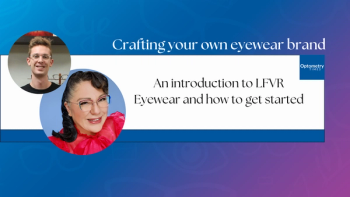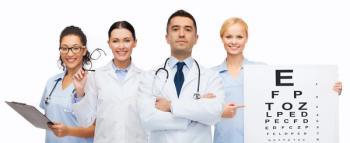
Patients with declining vision need extra care
As primary care providers, optometrists are often in a position to provide eye care through a patient's lifetime.
Orlando, FL-As primary care providers, optometrists are often in a position to provide eye care throughout a patient's lifetime. Therefore, ODs have a responsibility to help their patients when declining vision becomes a problem, said Mark E. Wilkinson, OD, in his discussion of age-related vision loss here at the annual meeting of the American Optometric Association.
Maximizing independence
Once described as 20/70 or less, the definition of low vision has shifted away from numbers toward the concept of functional problems caused by disease or injury to the visual system.
The goal of vision rehabilitation is to enhance potential and increase independence by maximizing the function of the individual, which will ultimately improve quality of life.
In order to prescribe devices for visual improvement, the optometrist must first identify the site of the pathology and its effect on the visual field. It is important to explain the nature of the patient's problem and discuss how the patient can make adaptations to the environment.
Not all patients need to be referred to occupational therapy to learn how to use assistive devices, Dr. Wilkinson said, noting that the clinician or staff member can teach many patients during an office-based tutorial.
"A variety of different treatment options exist, but everything starts with refraction," he said. "It is imperative for optometrists to perform refraction because ophthalmologists and technicians may not be doing so."
The solution to the individual's vision loss may be absorptive lenses, optical or electronic magnification devices, better illumination, or other measures, including cataract surgery.
He also advocated introducing closed-circuit television relatively early, rather than waiting until a hand magnifier is no longer effective for sustained reading, since patients find that the brighter, bigger field of view is much easier to use.
"I show people closed circuit TV all the time because it's part of the continuum of care, and I want them to be know about all their options," Dr. Wilkinson said.
Newsletter
Want more insights like this? Subscribe to Optometry Times and get clinical pearls and practice tips delivered straight to your inbox.


















































.png)


